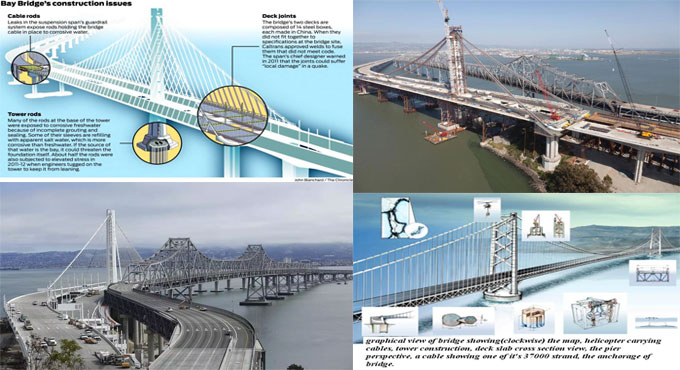
The importance of cable supported bridges against earthquakes
Cable supported bridges have good resistance capacity against earthquakes with regards to other types of bridges. But seismic weak points exist in cable supported bridges which can create damages at the time of earthquake.
The seismic vulnerabilities of cable supported bridges should be analyzed properly so that they can perform well in withstanding earthquake.
The seismic weakness in cable supported bridges is narrated in the following sections.
Performance of Cable Supported Bridges During Earthquakes - Given below, the lists of different types of cable supported bridges and how they perform throughout earthquakes:
? Suspension bridges
? Cable stayed bridges
? Bridges during construction
Performance of Suspension Bridges during Earthquakes
Seismic vulnerabilities in suspension bridges prevail in the various bridge elements.
Towers in the suspension bridge are formed with steels and initially the loads are delivered to them. The tower plate cells are the drawbacks of the towers which can be affected during earthquake. The plate cell of towers is not physically powerful and so it may buckle. The buckling of the tower shaft, that initially supports loads, will hamper the integrity of the complete structure.
The failure occurs because of large tower displacement as well as large P-delta effect.
Throughout earthquake, foundation uplift happens and as a result the tower shifts forward and back and/or side to side. If one side of the base of the shaft is detached from the pier, the load goes off from its original position.
So, compression load on the tower shaft will considerably raise and ultimately the tower shaft will buckle.
To get rid of this type of failure, arrange vertical stiffeners to the non-compact plates of the tower cells.
The concrete pedestals bear the steel tower shaft. The concrete pedestals are dependent on local high flexure and quite large shaking. These may produce tension cracks and probably concrete cover spalling. The perfect way to resolve this issue is to utilize pre-stressed strands.
Stiffening girders belong to the feeble parts of the suspension bridges. The main objective of stiffening girders is to resist live load and wind load. So, they will experience significant deterioration if an earthquake that passes through the wind load.
The bridges which exist for a long time, stiffening girders are developed in the form of trusses. Lateral braces and their connections encounter most of damages due to earthquake. So, reinforcement of lateral braces and connections is considered as appropriate seismic retrofit.
To gather more information, click the following link concretecivil.com


